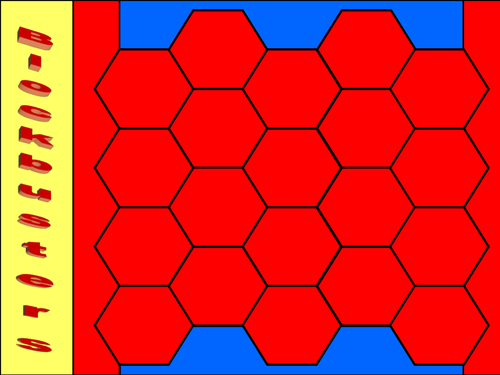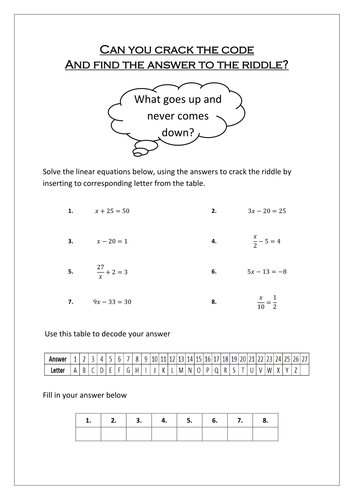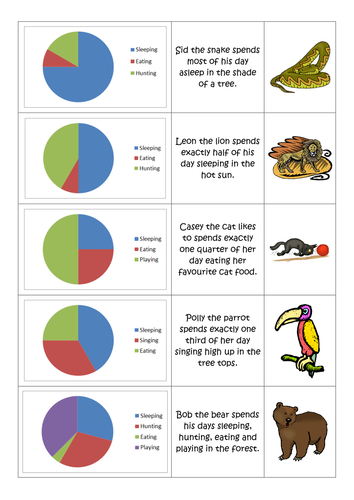87Uploads
291k+Views
258k+Downloads
All resources

Area and Circumference of a Circle
A lesson on calculating the area and circumference of a circle. Includes examples, questions and a nice sorting activity at the end. Could be used for foundation or higher GCSE.

Money and Bank Balance Game
This is a short game I made for pupils to look at which looks at the very basics of bank balance.
Pupils move there way around the board either collecting money or spending it and have to update their balance sheet to match it.
Also a nice way to introduce the concept of debt and negative numbers.

Expanding Brackets Activity
Here is an activity to help consolidate expanding brackets.
Cut out the tiles on the second sheet which contain the answers. Pupils need to match these tiles with the corresponding question on the grid on the first sheet.
There are some easier and some harder questions, I got them to work on it in groups of 3 at the end of a lesson on expanding brackets to consolidate their learning.

Circumference of a Circle (London Eye)
A lesson I designed on calculating the circumference of a cricle. Based around the London eye and how far you travel. Pupils are trying to calculate pi by measuring circular objects.
It also has a nice differentiated problem solving task at the end where pupils are required to apply knowledge.
A slide on what do we need to know where pupils need to brainstorm what things they need to answer the question before they are giving any information.

Converting Metric Units
Here is a lesson on converting between different metric units. It has a variety of different activities for practicing similar skills including differentiated questions.
Feel fee to use all of its or pick individual slides to use :-)

Sample Space Probability
This is a lesson I made on sample spaces. It is quite class specific so you may need to do a lot of adapting to the middle section to make it fit to your class. Nice question at the end though where I got pupils to work in pairs to justify their answers.

Area and Perimeter
A smartboard file with area and perimeter questions. Nice plenary at the end with pupils having to sort sorts into two boxes on area and perimeter.

Percentage of Amounts Puzzle
A percentage puzzle I produced where pupils need to answer the questions on the cards then arrange them from small to big. The letters form a riddle for the pupils to solve.
I had the pupils work in groups for 4, it is a good consolidation activity or a starter before looking at another percentage topic.
The solution to the riddle is 'age'.

Mean from a table
Here is a basic lesson on calculating means from a table. It starts by recapping averages then moves on to mean from a table.
I have done it the opposite way round to usual looking at estimated means first then finishing by asking them to look at a mean from a frequency table.

Thoughts and Crosses - Algebraic Fractions
An activity for pupils to play in pairs based on blooms or a way to provide differentiated questioning to pupils. Just as in normal noughts and crosses pupils need to make a line of 3, but instead of nought and crosses they must write their answer in a noughts and crosses grid. As an extension for those who finish I get them to work as a pair to complete the rest of the grid.

KS3 Solve Substitute and SImplify Blockbusters
KS3 Algebra activity. Class game where pupils have to answer questions in teams to win a game of blockbusters.
(Template is easy to edit to make your own)

Mean, Median and Mode Class Quiz
Here is a catchphrase type activity on averages (mean, median and mode).
When pupils answer questions click the square to remove it. Pupils get points for every star they find under the tile.

3D Shape Quiz
This quiz covers a few key bits of 3D shapes including nets, volumes, naming 3D shapes and cuboids, I also chucked in a random area of triangle questions as well.
As pupils give correct answers click the square to remove it as they move down the tack.

Adding Fractions - Thoughts and crosses
An activity for pupils to play in pairs based on blooms. Just as in normal noughts and crosses pupils need to make a line of 3, but instead of nought and crosses they must write their answer in a noughts and crosses grid. As an extension for those who finish I get them to work as a pair to complete the rest of the grid.

Which Santa? Cumulative Frequency and Box Plots
Here is a task I made for my class studying GCSE statistics group but also used with my higher group.
Pupils are required to complete a number of tasks to decide who should replace santa; buddy the elf or Fred Claus.
Requires pupils to construct a table of data, cumulative frequency diagram, read information from it, then construct a box blot (box and whisker) and interpret the results.
I prints the pages from the IWB and used them as worksheets!
Enjoy Christmas Maths!

Substitution Catchphrase
SImple catchphrase puzzle on smart notebook covering some basic elements of substitution.

Finding Percentages of Amounts
Here is a lesson I delivered as a reintroduction to percentages of amounts to a group of foundation students.
Contains Lesson plan, Loop Cards and the Smart notebook. I have included teacher hints to help people find things on the slides but please delete these out.
Includes an extension on percentage increase and decrease.
Enjoy! Feedback and improvements welcome!

KS3 Pie Charts Match Cards Activity
Simple activity for KS2/3 where pupils have to match the pie chart to the description of an animal.

Fraction to Percentage Beer Pong (without beer)
Here is a full lesson on converting fractions to percentages.
However the task at the end is the interesting bit! Pupils need to bounce a ping pong ball into a cup, you give pupil a card telling them how many times to repeat the experiment (10, 20 or 25 times). We then compare the results to see who is the best hopefully they will realise its hard to compare results when we've done different numbers of time. So they will need to convert their answers to percentages!




















